Email Marketing Strategy Template: How To Build And Examples
Most people begin their email marketing campaigns with the correct objectives in mind.
They seek to boost revenue, bring in new clients, and deepen relationships with existing customers. When implemented effectively, an effective email marketing strategy can assist marketers and business owners in achieving all of these objectives.
However, everyone starts having difficulty understanding effective email marketing when they start. They are perplexed, unsure of what to send or when to send it.
Finally, they either send a low-performing email or give up and don’t send anything at all. In either case, they’re squandering money.
Why?
People that fail at email marketing do so because they lack a strategy. Staying focused, motivated, and accountable would be much easier with an email marketing approach.
This means you’ll never have to worry about what to send or when to send it, and you’ll be able to get the most out of each email address in your list.
If you’re not a seasoned email marketer and need some assistance getting started with your campaigns, I’ve got you covered with the tools you’ll need to create your email marketing strategy in less than a day.
Are you ready to begin building your email marketing strategy? I will show you how to build one and an email marketing strategy template to copy as well. Let’s get started!
What is an email marketing strategy?
An email marketing strategy is a set of procedures that a marketer develops and implements in order to achieve desired marketing goals through email advertising. This strategy provides businesses with a direct line of communication with prospects and customers in order to promote their brand.
Given that every dollar spent on email marketing generates at least $42 in revenue for a company, more and more marketers are implementing email marketing. However, it is important to note that ineffective marketing strategies are doomed to fail and thus do not provide a good return on investment (ROI). For a successful email marketing strategy, a well-planned strategy should explain goals and provide an easy-to-follow roadmap.
How to build an email marketing strategy?
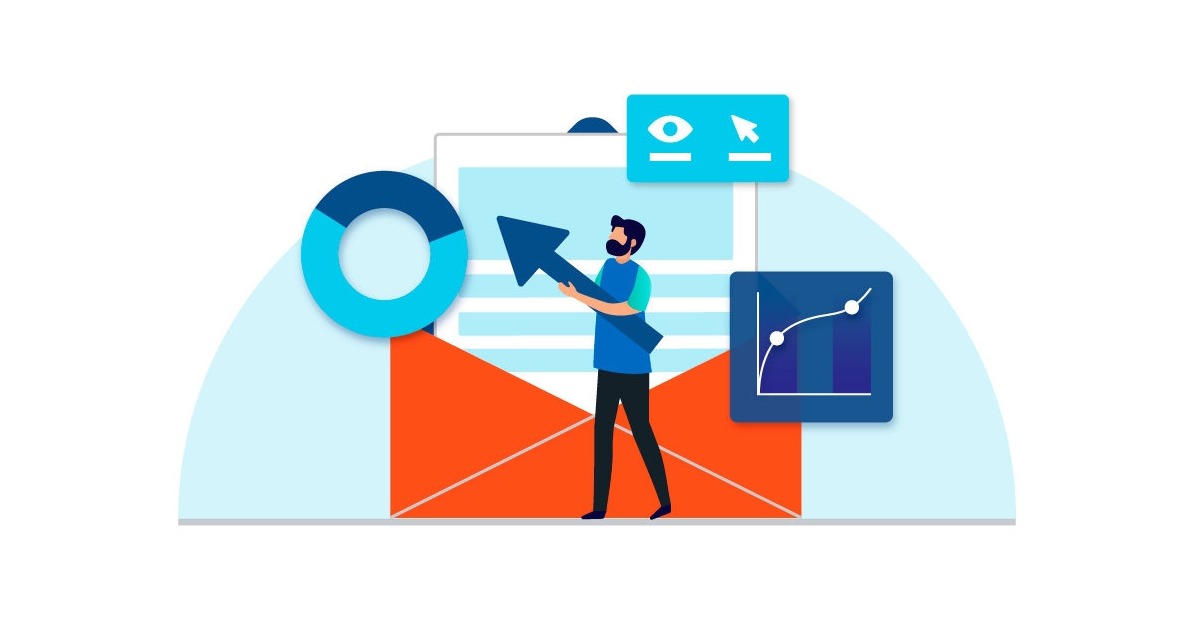
Creating an email marketing strategy template doesn’t have to be complicated. The following steps will help you plan your work and run your email campaigns in no time.
Step 1: Choose an email marketing tool
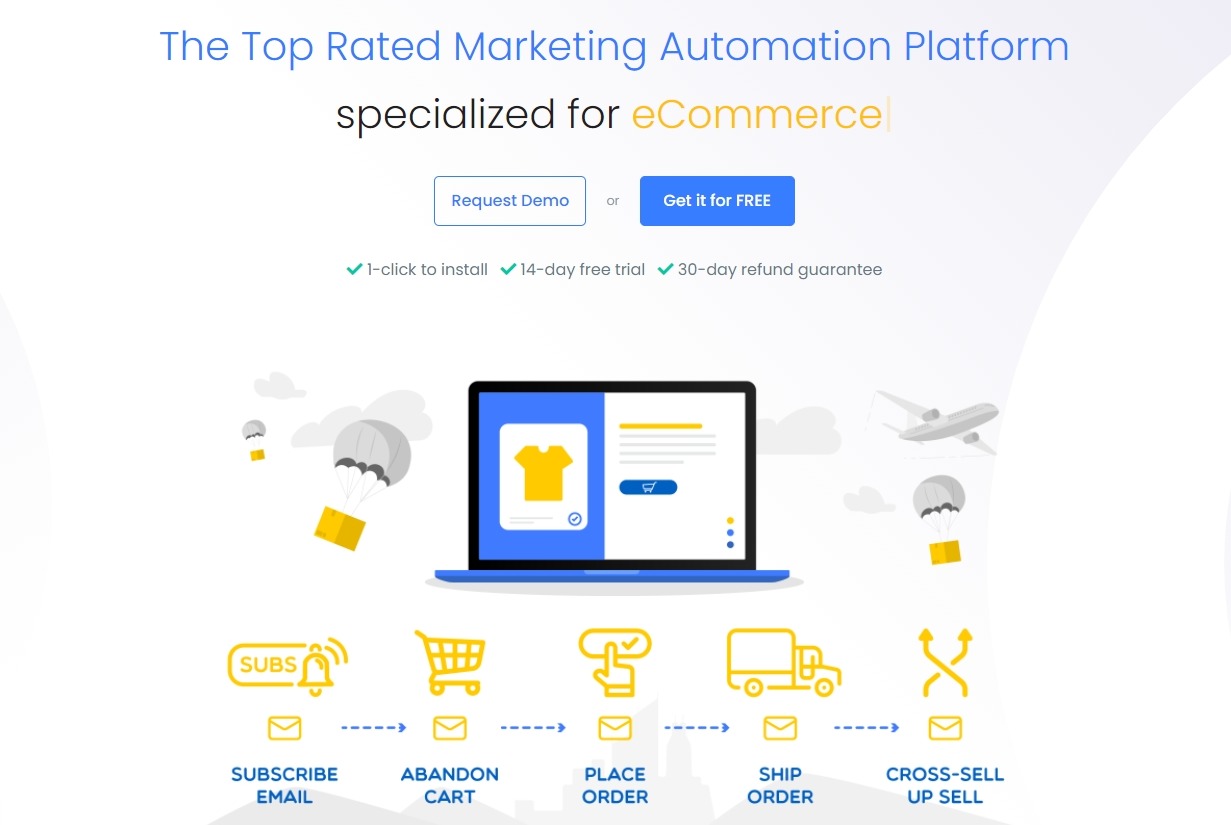
Finding the right email marketing tool is the first step in your strategy. There are many platforms that are super powerful and can help users organize and send email campaigns at the drop of a hat. Also, they can help you automate campaigns and measure the performance, which can take your email marketing to the next level.
First, you should have an email service provider. This tool will help you create, organize, and send your email campaigns plus basic tracking. Gmail and Outlook are two well-known email service providers that billions of people use, so you should be fine starting with either one of them.
You shouldn’t stop with a simple email marketing service provider, though. You should also consider adding an email marketing automation tool, such as AVADA Email Marketing.
Marketing automation makes it simple to follow up with customers and send subscribers the appropriate email at the appropriate time based on how they interact with your website. AVADA email marketing platforms include basic and advanced marketing automation features, such as the ability to automatically send birthday email messages or cart abandonment emails.
With AVADA Email Marketing, you also get access to opt-in forms to gain new subscribers, automated SMS messages to reach customers offline, and in-depth analytics to understand how your campaigns are performing. Better yet, you can start using the app for free with a free plan, then upgrade your subscription plan at only $9 per month for the Pro plan.
Once you have a go-to tool chosen, record the tool in a document for your email marketing team, including logins so you can work together on future campaigns.
Step 2: Identify the target audience
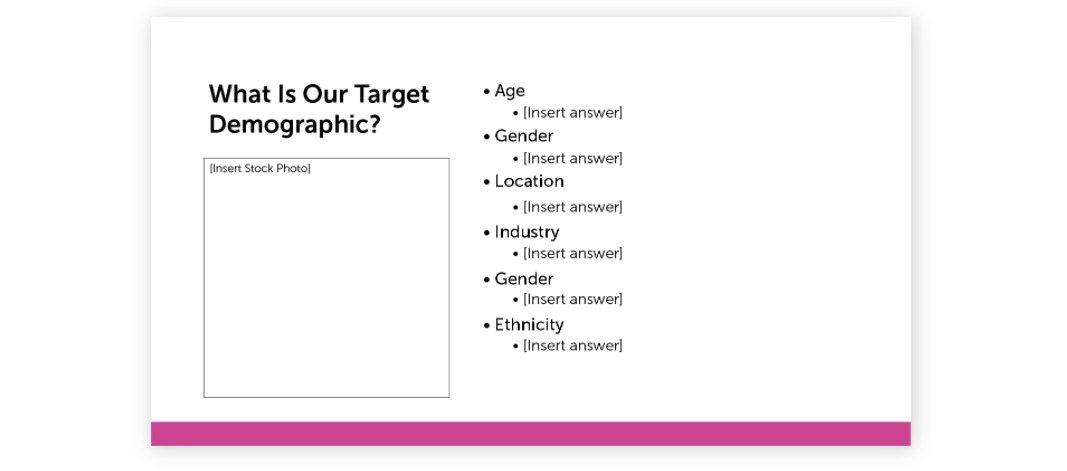
Once you’ve decided on your email marketing tools, you should concentrate on growing your email subscriber list.
Identifying your target audience is the first step in building your email list.
To refresh your memory, your target audience is the ideal customer you want to attract to your product or service through marketing efforts.
How do you find your intended audience?
First, respond to the following questions:
-
Who are our most loyal customers right now?
-
What characteristics do they share?
-
What issue are they having that has prompted our customers to seek a solution, such as our product or service?
-
Why did they decide to buy our product or service?
-
What did we offer our clients that our competitors did not?
Determine where these various groups of audience overlap once you’ve narrowed them down. Determine common demographic data such as:
-
Age\Gender\Location
-
Occupation
-
Income\Education
-
Relationship status
You should also consider your target audience’s habits, personal characteristics, and attitudes. What are their interests, for example? What do they place a high value on in life? What are their purchasing habits?
When you know who you’re trying to reach with email marketing, it’s much easier to tailor your messages and content to them.
After you’ve determined your target audience’s demographics, characteristics, and habits, record them in your email marketing strategy template for safekeeping.
Step 3: Find ways to build your email list
You must collect their email addresses in order to build your email list of subscribers. How do you go about doing that? You must attract them, gain their trust, and persuade them to want to hear more from you.
Create strategies to attract and persuade them to sign up for and join your email list.
Here are a few suggestions to get you started.
1. Give them something valuable through your opt-in form
One of the most common ways to get your audience to sign up for your email list is to hide content upgrades behind an opt-in form.
What is important to your customers?
A downloadable template or ebook that demonstrates how to solve a problem or answer a question.
You may lose a subscriber if you give something that does not provide value.
2. Ask them directly
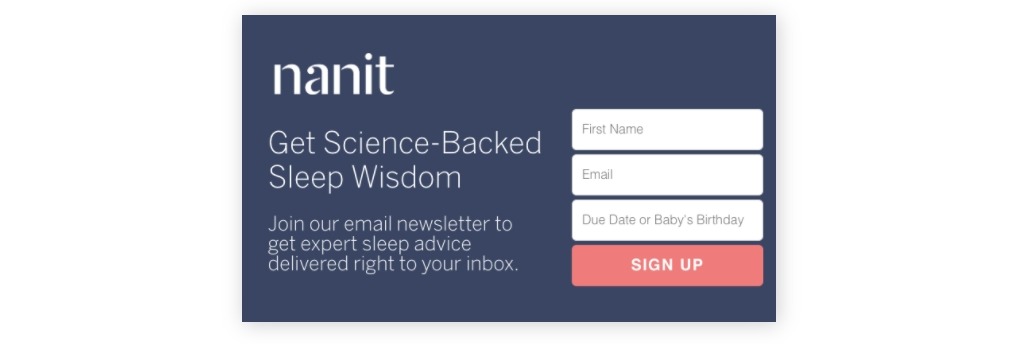
Another strategy for gaining subscribers is to make a direct request. Explain why they should join your email list and entice them with personalized content.
Here’s an example of a pop-up from Nanit that encourages visitors to sign up for their newsletter. The company requests the ages of the visitor’s children, implying that the company segments based on the developmental stages of the child’s age.
3. Place the opt-in at the header and the footer of your website
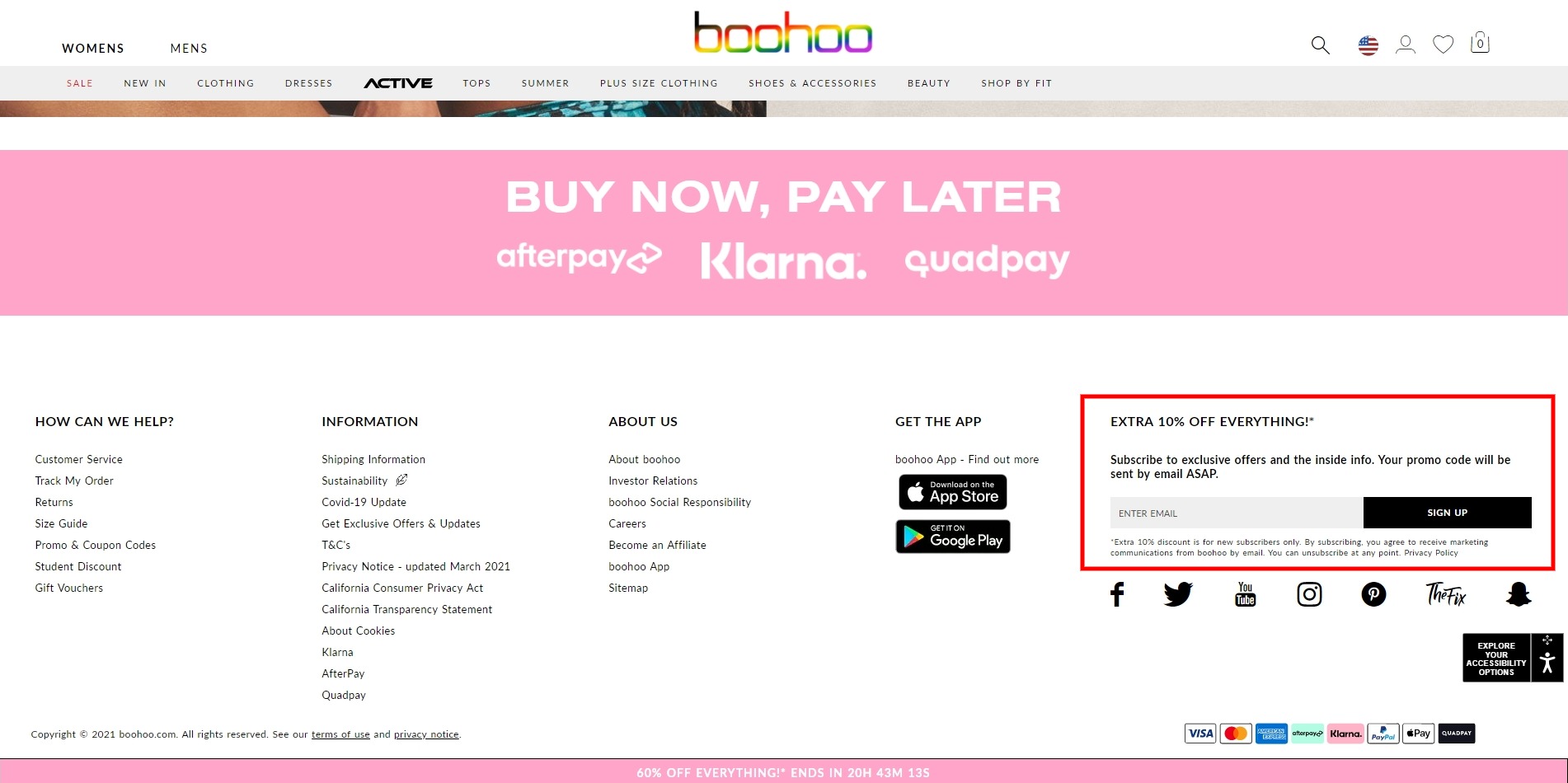
You can also include an email opt-in button in your website’s header and footer.
Why not meet your audience halfway and make it simple for them to remember that they can learn more about your products by joining your email list? The image above is an example from British clothing company, Boohoo.
Step 4: Segment your email list
So far, you have one group of email subscribers who are most likely part of your primary target audience. It can be difficult to send relevant emails to all of these different people, especially as your list grows.
What is the solution? Segmentation of email lists. Here’s a quick definition of email segmentation:
“The process of grouping similar individuals on an email list based on their behavior or characteristics in order to send specifically targeted emails that address the needs or problems of that specific group of users.”
You can simply send your emails to everyone on your list and hope that one of them will resonate with them and persuade them to convert.
However, we can now use data and information to go even further and serve content to the right people at the right time, guiding them through your marketing funnel.
In fact, segmenting your list can be beneficial to your email list. MailChimp conducted an internal study and discovered that segmented campaigns had the following benefits:
-
Open rates are 14.31 percent higher.
-
More than 100.95 percent more clicks
-
Unsubscribe rates are 9.37 percent lower in segmented campaigns than in non-segmented campaigns.
You can divide your list into sections based on a variety of criteria, such as:
-
The size of the company
-
Your website’s location activity
-
How long have they been on your mailing list?
-
To accurately segment your list, you must collect this information about your customers when they first sign up. Add options for subscribers to select before completing their signup.
In your email strategy template, list potential ways your team will try to grow and segment your email list. This way, the whole email marketing team can know which steps to take when encountering an email list of whichever size.
Step 5: Decide your type of email campaigns to send
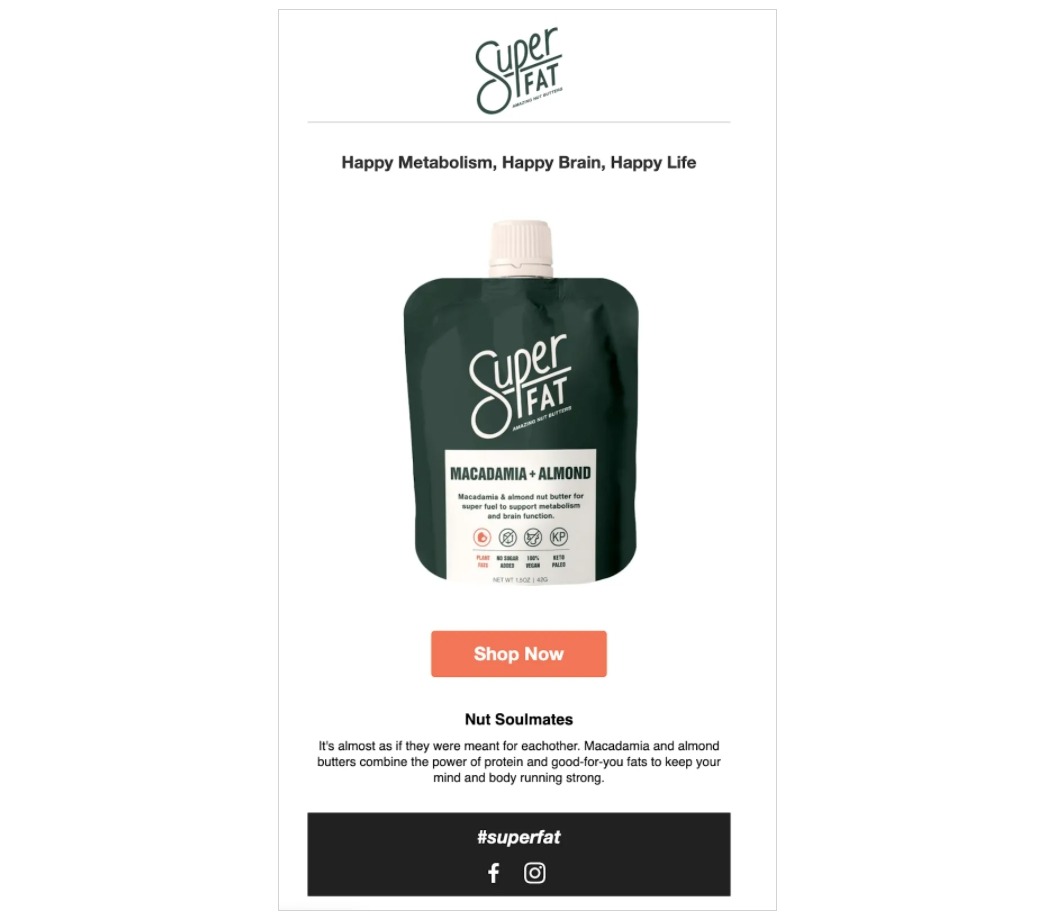
You can send a variety of emails to your mailing list. You can select one or change it based on the various segments in your list.
Here are three different kinds of emails to get you started.
Newsletters are an extremely popular email format. They are delivered to your subscribers’ inboxes at regular intervals. They enable you to show them a variety of content and information that your subscribers may have missed if they haven’t visited your website in a while.
Hubspot claims that successful email newsletters contain 90% educational content and 10% product or promotional content.
According to the same Hubspot post, newsletters should have a single theme or idea. This way, you can avoid slamming content into your newsletter at random just to get it out there.
You could even send out different newsletters on different topics depending on who is receiving them.
Drip email campaigns are emails sent to users based on their interactions with your website, or content sent on a regular basis, to help move customers down your email marketing funnel.
When a subscriber takes action, emails are drip-fed into their inbox to persuade them to convert.
These emails change depending on what your list members do. Assume you had a subscriber who visited your product page, added items to their cart, but did not complete a purchase.
Your subscribers could receive automated emails that gently remind them to return to their cart or learn more about their products.
Seasonal and promotional emails are sent at specific times of the year to encourage your readers to make purchases from your website.
Each email may differ and contain different, timely information that you want to convey to your recipients.
Choose which types of emails you want to send to your email list and record them in your strategy template.
Step 6: Determine the email frequency

You’ve sent some emails, and your subscriber list is growing, but your audience receives a large number of emails in a single day.
How can you make certain that your emails are read?
Sending them on the most strategic days and times, on the other hand, can be beneficial.
Your best times will differ slightly depending on your subscribers, so experiment to determine when your audience is most engaged.
You must not only send your email at the best time; you must also send it on the best day.
You can learn more about the timing for email marketing with this article on When is the best time to send marketing emails.
Remember, these are only suggestions. Use your email marketing platform’s analytics to fine-tune your send times and learn what works best for your audience. Then, in your template, record those winning times.
Step 7: Figure out the goals for your email marketing strategy
You’ve got your tools. You’ve identified your target audience and personas. You grew your email list. It is now time to set goals for your email campaigns.
Setting goals is essential for your email marketing program because it gives each email you send a purpose. Before you can plan a route to get there, you must first know where you’re going.
Setting strategic goals allows you to demonstrate to your boss and other stakeholders in your organization that your email marketing strategy is having the desired impact on your bottom line.
How do you develop a strong email marketing goal? By ensuring that they are S.M.A.R.T. (Specific - Measurable - Aspirational - Realistic - Timely).
Each goal you set should be measurable so you can track your progress, as well as specific to your campaign. Make sure they’re ambitious, but not so far that they’re out of reach.
Every goal should be pertinent to the campaign for which it was developed.
In other words, if an email isn’t directly selling something, you don’t necessarily want to track the number of purchases it prompted.
For example, the goal of a promotional email could be total sales attributed to said email, whereas the goal of a simple newsletter could be CTR on an article included.
Furthermore, each goal must be time-bound, which means you must complete your task within a specific time frame.
What kind of goals does an email marketing strategy often have?
-
Increasing click-through rates: Click-through rates indicate that your audience read your email and followed through by clicking the link to your website, which could lead to an increase in conversions.
-
Increasing your ROI: For every dollar spent on email marketing, you receive a $44 return on average. You could set objectives to help you increase your average ROI.
-
Increasing the number of people who open your emails: An unopened email is about as effective as one that has not been sent. Increasing your open rates is a good goal to have for your email marketing strategy.
-
Increasing your subscriber base: The more people you can reach with your emails, the better. Set a series of objectives to help you increase your total number of subscribers.
Then, enter these goals into your email marketing strategy template. You can have a general goal for the whole effort of email marketing and some smart goals for email marketing efforts during a period of time (day, month, year). Remember: your goals will depend on your brand and business goals.
Step 8: Measure your emails and adjust according to performance

The final step in your email marketing strategy will be to track your results and make changes based on the feedback you’ve received.
Each email marketing platform should have its own set of analytics that you can use to collect data.
You can look for and record information on:
-
Email opens: The number of emails opened in comparison to the number of emails sent.
-
Email delivery: How many emails were delivered from your send list?
-
Unsubscribers: How many people did you unsubscribe from your email list?
-
Subscribers who have just joined: How many new subscribers did you get?
-
Rates of click-through: How many people did you get to click on the links in your email?
-
The results of an A/B test: Which version of your A/B test was the winner?
-
ROI: How much revenue did your email generate in comparison to how much you spent?
-
The time subscribers spent after opening the email: How much time did a subscriber spend reading your email?
-
Bounces: How many emails arrived in an inbox but were returned unopened?
I would like to say more about email marketing A/B testing, since this is an essential part of the email marketing strategy. A/B testing is a series of tests that allows email marketing teams to change different parts of their email, such as the subject line, to see what types of copy perform best with their audience.
You can A/B test many different parts of your email campaigns including:
-
Your subject line (popular)
-
Images
-
Calls to action
-
Testimonials
-
Specific offers
-
Headlines
Depending on the type of email marketing tool you’re using, you will be able to A/B test some or many aspects of your email. With AVADA Email Marketing, you will be able to design tests for all of the elements above in emails and review performance to make adjustments.
More than that, the dashboard of AVADA Email Marketing also lets you manage your email campaigns easily. Once you have your email marketing strategy in place, a lot of work will need to be done, so getting organized is essential. With AVADA Email Marketing, you can set up automated campaigns, newsletters, and optin forms to run on autopilot, then measure them all in the Reports section.
It is a professional manager for your dream email marketing project, really.
Email marketing strategy template
With the information that you have and your strategy in hand, you can create an email marketing strategy template of your own. Now you can start setting goals, planning ahead, and creating a strategy that helps boost the email marketing performance of your business.
To help you, here is an email marketing strategy template that you only need to write in information to start using:
| Email Marketing Strategy Template by AVADA | |
|---|---|
| Tool selection | AVADA Email Marketing |
| Target audience | Age: Gender: Location: Industry: Ethnicity: |
| Email list segments | Segment name: Demographic: Description: |
| Email content types | Explain the type of content that you will send to your target audience (sales promo, newsletter, drip email campaigns, etc). |
| Email frequency | According to research and testing, the best times to send emails to the list are: Time: Time: Time: And the best days to send emails to the list are: Day: Day: |
| Email marketing goals | The following goals are the email marketing team want to achieve in the next (year, quarter, month): Goal one: Goal two: Goal three: |
| Email A/B tests | The elements that we will test emails to achieve a higher performance are: Test element one: Test element two: Test element three: |
| Results | Record the results of your campaigns to see if the strategy is going the right way: Emails sent Emails opened Emails clicked Revenue Unsubscribes |
Wrap up
Email marketing is a multi-step process with numerous moving parts and pieces. You’ll have a much more difficult time keeping track of everything, planning individual campaigns, and measuring your progress and success if you don’t have a solid strategy in place.
With this article on email marketing strategy template, you can copy my strategy template and manage and measure your email marketing performance through AVADA Email Marketing. The app can provide you with all of the performance statistics I mentioned in the template, as well as automation to make your campaigns run on autopilot.
Best of all, AVADA Email Marketing is free to start using. So give it a try!
New Posts






